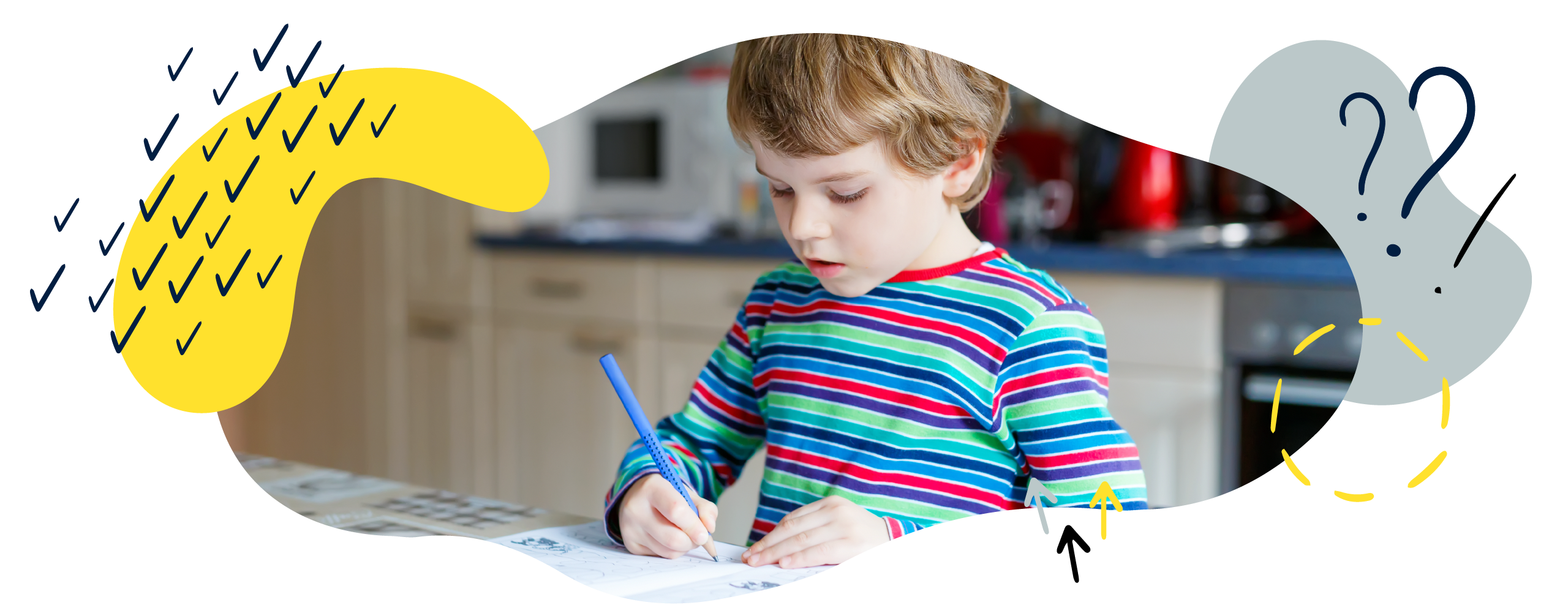Writing in Year 6 (age 10–11)
In Year 6, your child will continue to develop develop as a writer, becoming more independent and creative. Read on to discover the National Curriculum expectations for writing in Year 6, and to find out how you can support your child at home.
How to help at home
There are lots of ways you can help your Year 6 child with writing. Here are our top ideas.
1. Read to your child
While children do learn new language and ideas from speaking and listening, the type of language we use in writing is often very different from that in speech. Reading regularly to your child, especially longer chapter books that they might not be able to yet read independently, is a great way to support their writing.
When you are reading together, look at how authors use different techniques for effect. For example, how do they show excitement or build a sense of tension? How do they make use of interesting language, such as metaphors or similes?
For books to read with your child, take a look at our free eBook library.
2. Have your child to read to you
Even though your child may be able to read independently now, making time to hear them read is great for their reading development. Also, by frequently seeing words in print, they will be able to see how different words (and the punctuation and grammar that join them) are used to share meaning.
When you read, occasionally look at the punctuation and talk about what it is telling the reader to do. Show your child how a question mark tells you to raise your voice at the end of the sentence to indicate a question being asked.
Explore how you can show the ‘feeling’ behind an exclamation mark. Are the characters shouting? Has something unexpected happened? Has something gone wrong?
3. Try some real-world writing
Writing at home can be a great way of practising writing, including using grammar and punctuation to create particular effects. Here are some ideas to encourage regular writing:
-
- Create a story about a space adventurer with strange planetary systems to explore. Every week or month, your child could write about a new chapter about a different planet. Before long, the chapters will have built into a book they can be really proud of.
- Write an A-to-Z. It could be based on anything your child is interested in – animals, space, dinosaurs, fairies, even their favourite TV programme. A page for each letter of the alphabet gives you 26 short pieces of writing spread over the year that build into one big project.
- Produce a version of a book for a younger child. For example, they could write The Rhino Who Came to Tea or The Very Hungry Angler Fish. Books with a distinctive format such as The Day the Crayons Quit or The Last Polar Bears are perfect for this.
- Write the book of a film or TV programme. If children have watched something they’ve really enjoyed, they could try and tell the same story in writing. Watching the story on screen can give them a useful frame to hang their own writing on.
- While writing using a pen and pencil is useful practice, writing on the computer counts too. You might want to turn the spelling and grammar check off to help children to learn to confidently use their own knowledge. The grammar check can be wrong, too, so this can be confusing for children.
4. Tell stories aloud
Giving your child the opportunity to tell stories orally is a great way to get them used to structuring their ideas and using adventurous language. If they’re not sure where to start, see if they can retell a story that they already know well. Our Traditional tale titles activity sheet has some fun ideas for retelling old stories.
If your child finds it useful to plan out their story first, try our free Story mountain to make a great plot with a beginning, middle, and end. Your child might also enjoy reciting poetry – see if your child can memorise and perform ‘Who has seen the wind?’ with our Perform a poem activity sheet.
Activity: Story mountain
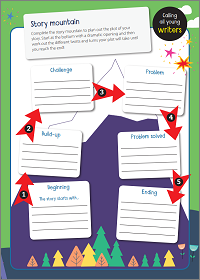
Complete the story mountain to plan your story with a beginning, middle, and end.
Activity: Perform a poem
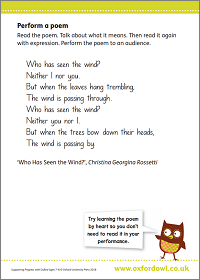
Read the poem, talk about what it means, and perform it to an audience.
5. Find story inspiration
You can find fun story ideas anywhere! Why not raid your kitchen cupboards or hunt through the attic to find lost treasures? Anything from an old hat to a telescope will do the trick. What could the object be used for? Who might be looking for it? What secrets could it hold? Suggest different genres such as mystery or science fiction and discuss how the item might be used in this kind of story.
Real-world facts can also be a great source of inspiration. For example, did you know a jumping flea can accelerate faster than a space rocket taking off into orbit? What crazy story can your child make out of this fact? Newspapers and news websites can be great for finding these sorts of ideas.
For more storytelling ideas, download our free Story idea generator or our Character profile activity sheet.
Activity: Story idea generator
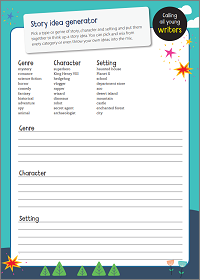
Mix together a genre, character, and setting to think up a story idea.
Activity: Character profile
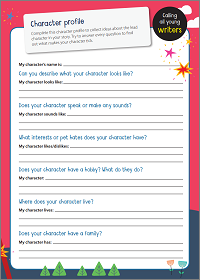
Come up with lots of interesting details about the lead character in your story.
6. Draw your ideas first
If your child isn’t sure where to start with a story or even a piece of non-fiction, it can sometimes be helpful to sketch out their ideas first. For instance, can they draw a picture of a dastardly villain or a brave hero? How about a scary woodland or an enchanted castle?
Your child might also find it useful to draw maps or diagrams. What are all the different areas of their fantasy landscape called? How is the baddie’s base organised?
Some children might enjoy taking this idea a step further and drawing their own comics. This is great practice – it stretches your child’s creativity, gets them thinking about plot, character, and dialogue, and is a big confidence boost once they’ve finished and have an amazing story to look back on.
What your child will learn
In Year 6 (age 10–11), your child will be aiming to build upon the goals and expectations they were first set in Year 5. They will be expected to:
-
- Plan their writing by:
- Identifying the audience for and purpose of the writing
- Noting and developing initial ideas, drawing on reading and research where necessary.
- Draft and write by:
- Selecting appropriate grammar and vocabulary, understanding how such choices can change and enhance meaning
- In narratives, describing settings, characters and atmosphere and integrating dialogue to convey character and advance the action
- Using a wide range of devices to build cohesion within and across paragraphs
- Using further organisational and presentational devices to structure text and to guide the reader (for example, headings, bullet points, and underlining).
- Evaluate and edit by:
- Assessing the effectiveness of their own and others’ writing
- Proposing changes to vocabulary, grammar and punctuation to enhance effects and clarify meaning
- Ensuring the consistent and correct use of tense throughout a piece of writing
- Ensuring correct subject and verb agreement when using singular and plural, distinguishing between the language of speech and writing and choosing the appropriate register.
- Proof-read for spelling and punctuation errors.
- Plan their writing by:
Handwriting, spelling, grammar, and punctuation are all important aspects of writing too. You can find out more about them on our dedicated pages:
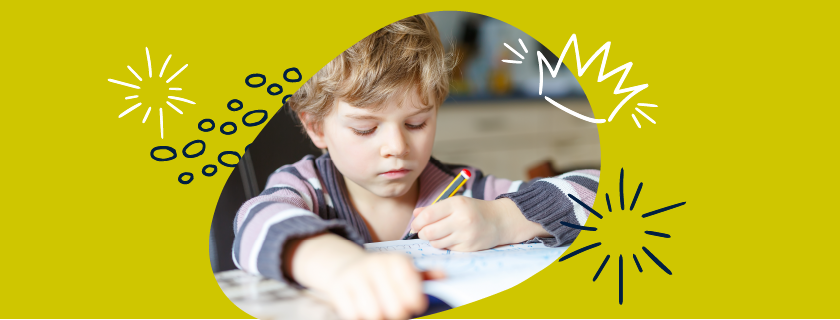
Handwriting in Year 6 (age 10-11)
Find out more about handwriting in Year 6 at Primary School.

Spelling in Year 6 (age 10-11)
Find out more about spelling in Year 6 at Primary School.
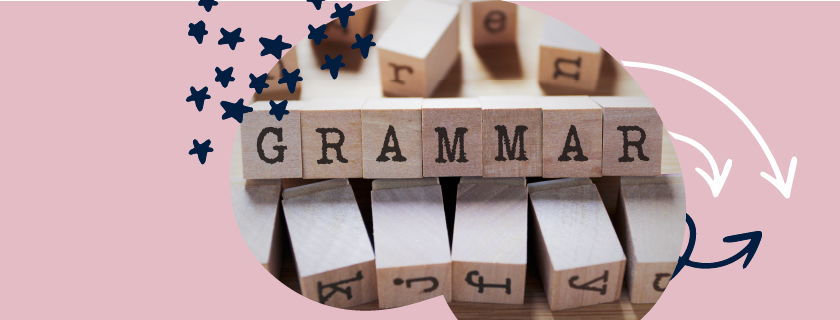
Grammar and punctuation in Year 6 (age 10-11)
Find out more about grammar and punctuation in Year 6 at Primary School.
